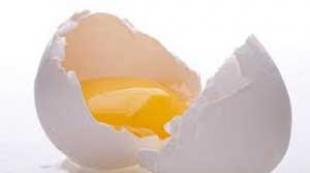How to dock parquet and tiles, types of joints. What if you need to make a joint between tiles and parquet? Gap between tiles and parquet
The combination of several finishing materials makes the room beautiful, original. Such a contrast will help you realize the most daring design ideas. Naturally, special attention should be paid to the types of cladding used. Some of them are not so easy to match. However, practically nothing is impossible in the world.
So, tile is a special material that "feels" temperature changes well. However, humidity does not have a significant effect on it. This is what ensures the minimum degree of linear expansion. But parquet is able to respond to almost all external influences. That is, under the influence of moisture or temperature changes, it is able to narrow and expand.
Combining these materials without a special expansion joint can result in you one day finding your flooring billowing up like a house.

Therefore, a compensatory shock-absorbing gap must be present. Naturally, it should look beautiful and smooth out the possible difference in height between tiles and parquet.
This combination looks very nice in the kitchen. Here, tiles can be used in the working area, but in the area where dinner table, parquet is laid. There are several ways to design, which we will now consider in detail.
Features of one-piece docking
This method is considered the fastest and most durable. To work, you may need:
- Sealant.
- Glue.
- Mounting foam.
- Silicone paste.
When choosing the means by which you will connect the tiles and parquet, you need to take it into account specifications. In particular, pay attention to the parameters of elasticity. They should be high, because the presented materials are very difficult to combine.

To glue tiles and parquet into the gap, place a fixing agent and evenly distribute it. After the adhesive has completely dried, it is possible to seal the seam with ordinary tile grout. Please note that its tone must match the color of the finishing materials. Only in this case, the joint can be made neat and beautiful.
This connection method is considered the most durable and reliable, since the seam is practically impossible to destroy.
During operation, fill the gap with sealant or glue very carefully so that the substance does not get on the parquet.
If it was not possible to work completely without dirt, then try to remove excess composition from the surface of the finishing material. Make sure that the width of the seam is the same throughout its length. It is important that the joint is as accurate as possible in height.
Advantages and disadvantages of invisible docking
This method also has the right to life. It consists in the fact that tiles and parquet are connected using a fugue for ceramics. The advantage of this method is:
- Invisibility of the seam;
- Possibility to choose different shades of the fugue.

There are many more disadvantages:
- Incompatibility of the material with parquet, so the mixture is practically not attached to the tree;
- The need for constant renewal of the seam during the operation of the floor covering;
- Perfect fit required facing materials in height;
- If the seam has a greater depth or width, then the sealant simply sits down. This creates a small hole in which debris and dirt enters. Over time, this hollow becomes ugly and needs to be redone;
- Such a tool can crack, fall out of the seam;
- Since the parquet is constantly expanding and contracting, the sealant is in motion. This contributes to the appearance of cracks;
- This method will be useless if laminated or is used as a floor covering.
In addition, the gap between these coatings should be 3 mm, and in order to achieve this, you need to try very hard.
Please note that the contact connection of two materials that are different in structure and properties cannot be in principle. They differ significantly in the level of elasticity, which contributes to the destruction of the coating.
Features of cork docking
In order for this method to be as effective as possible, parquet and ceramics should be laid according to all installation rules. That is, it is necessary to lay the materials perfectly evenly. The thickness of the cork clamps ranges from 0.6-1.5 cm. The cork should be installed even before the parquet is sanded and varnished.

The presented seal has a high degree of elasticity, so it must be screwed in very carefully and carefully. During all work, care must be taken to ensure that the width of the expansion joint remains the same.
This connection method has the following advantages:
- Durability. Cork may not change its properties for a very long time.
- Reliability. You won't have to repair the connection often.
- No need for any special care.
- Low material cost.
- Environmentally friendly cork, as it is natural.
- Various material options. For example, in the store you can buy cork in liquid form. It is made from crumbs mixed with glue. It just needs to be squeezed right into the gap. Please note that this material can shrink a lot, so you need to use it quite a lot. After the substance dries, cut off the excess parts with a special knife.
This material provides a very strong joint between parquet and tiles.

The use of thresholds
Such elements will help to dock these types of flooring, even if there are differences in height. However, after setting the threshold, this difference is not visible. You can use elements for both a regular connection and a non-standard zigzag connection.

Thresholds are made of plastic or metal, as well as wood. There is a large selection in stores color solutions. After installing the threshold, the floor looks beautiful, complete, divided. The transition from one type of flooring to another is very smooth.
There are several ways to install the threshold:
- Closed. In this case, the product consists of two parts. At the same time, the lower one is screwed to the floor covering with screws, and the upper element snaps into place. Fasteners are hidden inside. The connection looks neat. But here you need to take into account one nuance: the threshold can interfere with you while moving around the house.
- Open. In this case, the gap is covered with a threshold, which is screwed to the base with screws. Fastening can also be done with dowels (if there is a concrete screed).
 On the picture step-by-step instruction for installing the threshold in the seam between the tile and the parquet.
On the picture step-by-step instruction for installing the threshold in the seam between the tile and the parquet. Features of the profile connection
Often a profile is used to design such a seam. It can be metal or plastic. The latter may have different shades. A decorative tape can also be glued on a metal product.
The profile is narrow or wide, equipped with a threshold or not. The product is usually laid over the gap and screwed with self-tapping screws. This connection method cannot be called very beautiful, but it hides the height difference between the coatings well.
So that any docking is of high quality and beautiful, laying out ceramic elements, try not to cover one row.
On the surface of this layer, you need to set the level beacons, on which the parquet is subsequently mounted. This must be done as in most cases the edge of the tiles will need to be raised slightly for the underlay.

After the wood flooring is laid, you can start gluing the last row of ceramics. If you decide to close the expansion joint with a molding, then the fittings must have a perforated base. This will ensure full contact between the two floor coverings.
As you can see, there are a large number of methods for connecting different finishing materials. However, you need to choose the one that will meet all your requirements, because not only beauty is important, but also quality. Happy repair!
Combinations of seemingly non-combinable materials look stylish and unusual if done right. What can be the junction of parquet and tiles without a threshold, what are the features of the junction with a threshold and how to properly install in both cases? More on that below.
There is different ways join parquet flooring and tiles
Design ideas have reached such a scale that the combination of materials such as parquet and tiles no longer seems out of the ordinary. In the decoration of the premises, combinations are used in two versions: contrasting and plain. The first will be appreciated by fans of bright, exclusive designs, the second will appeal to adherents of conservatism.
Correctly built-in lighting in the parquet or parquet board, a successful combination of patterns and thoughtful zoning will add additional novelty to the composition.

The option of zoning a room using a combination of different coatings
The combination of materials allows you to perform functional zoning in a room for any purpose. So, for example, in an apartment or house with an emphasis on natural materials for decoration and, in particular, parquet for the floor, tiles will become an indispensable element of the interior in the hallway area, where it is not so easy to maintain perfect cleanliness.
In the same way, tiles and parquet or parquet boards are combined in the kitchen, in the dining room, highlighting work areas and areas for rest and eating. Despite the naturalness of both types of materials, the tile is more resistant to moisture and mechanical damage, so it will be an ideal solution in a work area or in an area with increased load.
Joint - what is it and why is it necessary?
Combining materials, you need to think about how to make sure that the junction of tiles and parquet does not violate the integrity and harmony of the composition.

A good joint in the room does not spoil its appearance and does not leave places for possible damage on the edges of the coating.
Joints are decorated in several ways:
- molding;
- threshold;
- sealant;
- cork compensator.
More than others, it is the threshold that catches the eye. It is advisable to use it when it is necessary to draw attention to the division of the floor into separate zones. If the main goal is to decorate the joint in such a way that the canvas seems to be one whole, it is better to use a sealant or a cork compensator.
Pros and cons of materials for decorating joints
The most popular joint decor options have their advantages and disadvantages. So, for example, sealant is one of the most affordable means for masking a connecting seam. It is convenient and easy to work with it, and the color scheme does not limit the choice. Of the minuses, impracticality can be distinguished. The material loses its presentability after a year of operation with medium-intensity loads and even earlier if active loads are expected.
Cork, laid out between the parquet and tiles, allows you to effectively mask the joint. The advantage of the material is simple installation and impeccable service as a damper. Gap does not open even with possible parameter changes parquet board under the influence of temperature and humidity fluctuations, and this is important. Cork expands and contracts with parquet. If the goal is to create a joint without elevations, perfectly even and smooth, then the material is suitable in all respects.

Wavy joint option in the room
Alternatively, you can use liquid cork as a material for docking decor. We are talking about a special adhesive composition with a filler based on cork chips. This version of the material has a lot of advantages and is primarily relevant when it is planned to build a strong, elastic and durable base without a nut.
Profile - a complex and durable option for a joint. Usually this is a threshold made of plastic or metal, connecting two coating options. The disadvantage of the design is the elevation formed as a result of fastening. At the same time, it is the threshold that allows you to mask flaws in the process of trimming materials, effectively arrange the joints in the doorway.
The standard length of the profile imposes restrictions on its use, so most often the sills are used exclusively for decorating interior joints.
How to close the seams with sealant: instructions
If the goal is the junction of tiles and parquet boards without a threshold using the most affordable finishing material - sealant, then it is worth preparing the following set of tools and materials:
- sealant;
- vegetable oil;
- putty knife;
- gloves.

Another option for joining surfaces
The process begins with the preparation of the working surface - cleaning the seam from dust and dirt, lubricating it with oil (you can use masking tape) in case sealant gets on the surface.
The sealant is applied into the groove of the seam with a syringe gun, removing excess mass with a spatula. It is necessary to control that the layer of the mixture is uniform and not too thick.
In order for the joining of tiles and parquet to look as harmonious as possible, as noted above, it is better to use a cork for decoration. Strips made of this material are elastic and easy to use. In the process you will need:
- scissors;
- stationery knife;
- ruler;
- strips of cork material (2-3 mm wider than the seam and a length equal to the butt).
The prepared cork strips are glued to the joint with polyurethane glue.
The decor with a liquid cork is more like a sealant finish in terms of technology. They also start with processing the edges of the joint with oil, after which they fill it with the prepared composition. Excess cork material is cut off after drying. Cycling work can be carried out a day after the seam has dried.

Option for neatly decorating the joint with a cork
The technology of the device of the nut in the design of the joint
Thresholds are plates made of plastic or metal with a width of 20 to 100 mm and a length of 2700 mm. They are suitable exclusively for decorating joints with a length not exceeding the length of the profile.
The use of a threshold for decorating surfaces made of two different materials in the interior space justifies itself in all respects. For the construction device you will need:
- drill;
- a drill corresponding to the surface of the subfloor (if it is concrete, then with a victorious coating, wood - special for wood);
- fasteners;
- hacksaw for metal;
- screwdriver;
- Ruler and pencil.
Start with measurements. Measure the required length of the profile, cutting off the desired part. In some cases, to form an integral composition, the edges of the nut are cut off at an angle, repeating the shape of the door frame.

An example of a threshold when making a joint in a room
Fasteners are inserted into the holes on the profile and screwed to the joint, taking into account the features of the rough surface.
Depending on the design features of the canvas and the room, straight plates, flexible or angular are used.
Some rooms are not intended for laying parquet boards due to their purpose. For example, this is a bathroom, kitchen, a place by the fireplace or a washroom in the bath. How to make the two materials fit together and look in a winning light. This will help joining parquet boards and tiles with special materials. A conscientious combination is difficult to distinguish from the whole canvas - it gives such an impression.
Joint between parquet and tiles.
What are the difficulties of matching? It would seem that two materials ideally lying on the floor of the joint simply do not require. However, only tiles are such, and parquet is a material that changes with changes in temperature, humidity, load, and other things, that is, whimsical. There will be no problems with it if it is laid on a limited area without transitions to other surfaces.
The grooves and locking joints are securely interlocked and there is no movement. The situation is different if you want to make a flat floor in the premises, with open doors. For example, in the kitchen, dining room or living room.
Main materials used

Stages of joining parquet boards and tiles.
- Sealant. It should, of course, be in harmony with one of their coatings. But this method of docking has some disadvantages - it is very difficult to choose the original background and the durability of the sealant is not up to par. It quickly comes into a sloppy look, falls off in pieces and, during installation, has bad smell vinegar.
- Cork. These are pieces of material cut from a whole canvas. Such a joint looks beautiful in combination with wood parquet boards and tiles. But there is a nuance - the joints must be done before scraping and grinding the surface, and this is a job for the craftsmen. However, an invaluable advantage of such a material is the possibility of joining various geometric bends, since it lends itself to any action, and even the depreciation of the floor, which will not allow the board or tile to be damaged during operation.
- Liquid cork. Glue-based material with cork crumbs added to it. It is convenient in that it allows you to tightly fasten two materials after solidification. Even a non-professional can handle the application. Installation is carried out before scraping.
- PFH and metal profiles. The easiest to install, but the decorative effect leaves much to be desired. Although, if performed flawlessly, they can represent the edging of two materials - boards and tiles. The minus is quite significant - such materials can only be used in a straight line, they are not subject to bends.
Mounting with conventional sealant
What you need:
- compound;
- syringe gun;
- gloves;
- putty knife;
- oil for lubrication.

Cork compensator when joining parquet and tiles allows you to make the floor surface perfectly flat without sharp drops.
The joint surface is lubricated with oil. Can be used for processing sewing machines or automatic trimmers. It is convenient to apply with a few drops from the bottle. With a clean cotton pad, rub the drops on both surfaces. This is done so that the sealant, in case of inaccurate use, can easily be separated from the tile or board.
Then the bottle is inserted into the gun, and with smooth movements without tremor, the composition is introduced into the gap where the joint should be.
If too protruding edges are obtained, then with the help of a spatula the excess is immediately removed flush with the floor. Thus, the connections will be flawless.
It is best if the extruded and smoothed layer of sealant is pressed into the seam. This will help its durability - touching such a strip will be a problem.
Complete drying of the composition will occur after 24 hours. During this time, you need to try not to walk on this section of the floor, so as not to cause a displacement of the joint.
The method is not the most laborious, but requires accuracy.
Errors when working with silicone sealant:
- Make a thick layer of strip. When removing excess, you can completely pull it back.
- Work on short stretches. The reason is the same.
Features of working with cork
What will be required:
- cork sheet or mat;
- scissors;
- stationery knife;
- measuring devices.

Options for overlay strips for joining floor coverings.
Strips are cut from the sheet to seal the seam. They are made in such a way as to be 2 mm wider than the gap. Because nothing will be used to fasten such material - the cork should fit tightly.
At the end of work with the sealant, scraping and grinding should be carried out. Then the connection and appearance of both surfaces will be perfect.
Since installation involves the use of special machines for subsequent work, then, of course, skill is needed in work. Better to trust the pros.
Errors when working with cork:
- Cut material into strips. You need the entire length at the joint.
- Make the material thinner than the seam or flush (a little more) so that the cork enters tightly. Neglecting this, it is possible to ensure that the material will fly out during scraping.
And if a liquid stopper is used
Additionally you will need:
- tube with composition;
- stationery knife;
- oil.
As with the sealant, wipe the two surfaces with oil using a swab or cotton pad.
Then, gradually squeezing the mass out of the tube, fill the gaps between the tile and the board with a liquid plug. If the floor in both planes is perfectly flat and is a single canvas, then there should be no problems. Otherwise, you should focus on the edges of the surface that is higher. And equalize the cork on them.

Options for joining various coatings using a nut.
After hardening, the excess is cut off with a knife, trying not to damage either the boards or the tiles. This will happen no earlier than in a day. But the flaws from the surfaces must be removed immediately so that the adhesive composition is not tightly pressed. This is easy to do if the floors were covered with oil.
Then work on scraping and grinding is underway. As is clear from the written, the work is simple, but with cycling House master may not work. However, if you dare, then it will turn out.
Errors when working with a liquid stopper:
- Do not use oil to protect the edges of various materials. In the end, it will firmly stick to the floor, and it is difficult to pick out such glue. If the tiles still somehow work out, then the parquet can be ruined.
- Do not level the composition on the surface above the level. This is fraught with gaps and loose fit.
- Do not allow the mixture to dry completely. Days minimum.
PVC and metal profiles
List of required:
- profile suitable for one of the coatings;
- screwdriver;
- drill with a drill bit;
- awl;
- self-tapping screws or decorative nails;
- tape measure and pencil.
First, the required piece of material is cut off.

Installation of a flexible threshold for joining floor coverings.
It is worth considering that its length is the entire segment of the joint plus 1 cm. With a pencil, you need to outline the border where the overlap profile of the joints will be laid. Simply put, circle it along the contour so that the middle falls just on the seam.
Then you first need to drill holes in the tile. It will be very difficult to do this, because it tends to crack. Therefore, a drill is used good quality, with a diameter not less than self-tapping screws. The points where the drill will be directed should be slightly knocked off with an awl, slightly peeling off the top layer of ceramics. This will make it easier for the drill to enter and reduce the risk of tile cracks.
If the profile already has ready-made holes, then it is simply applied and fixed with self-tapping screws through two fasteners. This is for a flat finish. Then the rest are twisted. However, if the profile is clean, it must be prepared in advance - drill holes in accordance with the places where the tiles contain them.
Profiles are convenient to hide differences in heights of different surfaces. Parquet is usually lower than tile if laid by a non-professional, so the overlay is made in this respect. It is necessary to ensure that the fit of the profile is complete. And if this does not happen due to a large difference in the height of the surfaces, then such material for combining joints should be discarded.
Thus, the joining of the parquet board and tiles occurs PVC profiles or metal.

Dimensions of multi-level stainless steel thresholds.
Errors when working with profiles:
- Try to bend it into geometric shapes. The decoration result will be null. If there are convolutions in the floor, then the use of a profile is best avoided.
- You can not use material with a threshold if it will be installed in the center or diagonal of the floor. These models are used for doorways. Otherwise, every time you can hear the curses of the household if they cling to the thresholds with their toes.
- Attach the profile from different ends. Plastic models are very elastic, and you can achieve a "wave" with this work.
- You need to tighten the screws below the profile level. This way they will be less noticeable.
- It is impossible to install the joint of a parquet board and a tile with a profile if the difference in height differences is significant - from 0.5 cm.
Care of joints of surfaces from various materials
All of the listed options for sealing joints are too afraid of moisture. Except maybe the cork. The sealant falls off, the profile may rust. What to do, because wet cleaning is an integral part of maintaining cleanliness in the house? There is only one answer - do not overdo it. You can wipe, you can not wet. And be sure to dry!
Floors are the face of the house. Even if they are just clean, the impression of comfort is created immediately. And if the surface is beautiful connections, then there are simply no words. Their decoration must be done in detail. First, you should think about whether there is enough skill and patience for such work, and then proceed. One thing is for sure - any independent process will bear fruit if there is a desire to make your home unusual and beautiful.
Paul asked the question:
We plan to lay tiles on the floor in the corridor and in the kitchen, and parquet in the rooms. The corridor smoothly passes into the living room without a door. The floor is on the same level. What is the best way to arrange the transition between two coatings? I heard that you can do without a protruding threshold using cork material. How practical is it?
Tiler answer:
The most famous and common way is the threshold. They come from different material(plastic, metal, rubber, wood) and various colors. Attached to the floor with self-tapping screws. Some people love them, some don't. different reasons but it's only your choice. You can always choose the quality and appearance of one that will harmoniously fit into your interior. One of the disadvantages is that if your connection between the surfaces has a curvilinear shape, then not all of them bend, but most (in particular metal ones) have a long service life.
As for the connection without a threshold, you can use, as you noted, a cork compensator, which fills the joint between parquet and tiles. This material has a wide range of colors, you can easily pick up what you need. Unlike sills, which are fastened with screws over the junction of parquet boards and tiles, cork fills the gap between different coatings, so the cuts of these coatings must be even. This type of connection is fastened with construction adhesive, as well as sealant, which will additionally protect the cut of the parquet / parquet board, fill all micro-cracks. Sealant is selected by color. In this case, the edge of the parquet along the line of connection of the surfaces must be glued. Among the shortcomings: the standard length of the compensator is 90 cm, if your line is longer, then there will be more joints between the cork sills. As for your case in the hallway, the joint in this place should have high wear resistance, since this is a place of increased accumulation of sand, dirt, and water. Therefore, it is possible that cork material should not be used in the hallway.
If you choose a cork as a board and tile connector, keep in mind that its installation takes place before parquet is sanded and varnished, unless, of course, it is fully prepared for production use. Thanks to the installation of the compensator before scraping, the joint will turn out to be more even and adjacent.
Another option is a sealant that fills the distance between different surfaces. It is selected by color and fill the joint between ceramic tiles and parquet, pre-lubricating the edges with oil. And although this material provides complete sealing of cracks, it also has its drawbacks: short service life, loss appearance during operation.
Therefore, despite the possibility of docking various surfaces without the use of a protruding threshold, many still prefer them.
A gap is always left in the area of joining dissimilar floor coverings, designed to compensate for seasonal changes in the geometric dimensions of parquet, laminate, ceramics, etc. To give the seam a presentable look, special and universal materials with a decorative and protective effect are used.
Absolutely any finishing material, whether it be granite slabs or quartz-vinyl, has a certain deformation coefficient, which is affected by changes in temperature and air humidity. From floor decorative coatings most high level- for wood and its derivatives (solid, parquet or engineering board, laminated flooring, plywood, chipboard and others). That is why all the instructions indicate in black and white: the gap between the limiter and the floor material must be at least 6-14 mm, depending on the type of coating and the area of \u200b\u200bits assembly.
Along the perimeter of the rooms, the seams are closed with PVC, MDF or wooden skirting boards. For open joints in the area of joining parquet and ceramics, laminate and porcelain stoneware, carpet and parquet boards, a variety of decoration techniques are used. The main objectives of this work:
- smooth transition or level differences;
- protect the ends of the floor from dust, dirt, chips and other damage;
- make the seam as invisible and organic as possible;
- bring gloss and beauty.

How to arrange the joint of parquet materials and tiles
Gaps between floor coverings are closed by such means as:
Transition profiles or thresholds
They are an overhead strip of metal, wood, PVC or MDF, which is fixed to hardware, glue or special strips. Distinguish products:
- Butt overlapping. These are slightly concave narrow plastics up to 10 cm wide and up to 3 m long. They work on single-level coatings, fastened with dowels and self-tapping screws supplied in the kit;

- Multi-level - surface pads that smooth out differences between dissimilar floor materials. The width of the products is 10-70 mm, the length is 0.9-3 m, the attachment methods are similar to the previous type;

Threshold closing the joint of materials laid at different levels.
- With hidden fasteners - single-level thresholds, on which there are two protruding metal edges on the underside, forming a guide groove. The method of fastening is quite original: a hole for the dowel is drilled in the base, then the fastener is inserted into the longitudinal retainer. The whole structure is attached to the joint in such a way that the hardware coincides with the gaps in concrete or wood, and is carefully nailed. Product dimensions: width from 2.5 to 10 cm, length - 0.9 m, 1.8 m and 2.7 m;

Threshold with hidden fastening.
- With a hidden cable channel - single-level strips, the upper PVC part of which is removed, revealing a shallow cavity (similar to similar plastic skirting boards). Fastening, as a rule, hidden, along the guide grooves. Dimensions: width - up to 4 cm, length - up to 1.8 m.

Threshold with cable channel
- Adhesive. An analogue of butt-covering overlays, but instead of places for fasteners, two strips of durable synthetic glue are applied to the underside. This allows you to install the profile in a matter of minutes;

- Anti-slip. These are overhead strips for joints and steps, on the surface of which rubber strips are fixed or a layer of durable corrugated polyurethane is glued. On sale you can find thresholds with metal corrugation. The width of the products does not exceed 5.5 cm, the length is up to 3 m. The analogue is adhesive rubber anti-slip pads with a length of 1 to 10 m;

- Specialized. These are metal and MDF linings of a special profile (G-, H-, Z-, F-shaped and others), designed to connect homogeneous materials of different colors, density or thickness. THAT is, for example, for different types of tiles, porcelain stoneware, parquet, etc.

Metal thresholds are made in the following colors:
- Clean, that is, aluminum without additional finishing;
- Anodized bronze, gold, silver, etc. Are subject to special technological processes, as a result of which an oxide film of different shades is formed on the surface. Products are resistant to abrasion, not afraid of corrosion;
- Painted with special polymer-powder compositions. Rich colors and high surface quality
- Decorated with a film with a wood grain texture and pattern. This is the most popular type of thresholds, as the assortment can include up to 40 decors for any type of parquet, parquet, solid and engineered boards.

Variety of colors for thresholds.
Wooden thresholds are the most expensive views profiles, as they are produced by manufacturers of parquet boards from solid wood of valuable species. Moreover, they are selected for a specific set of products, for a maximum of 2-4 decors.
A cheaper analogue is MDF thresholds laminated with PVC film. The range is not too diverse, but when buying a parquet board or laminate of well-known brands, you can choose products that perfectly match the floor in texture and shade.
Particularly noteworthy are the so-called flexible PVC thresholds. These are strips made of tinted (not painted) durable plastic, which are snapped onto a special perforated profile (always included). They are distinguished by absolute water and biostability, resistant to abrasion and impact loads. With their help, you can decorate the joint of parquet and tiles of a rounded or complex shape, highlight columns and other elements, give the interior a special chic and elegance. Installation of PVC thresholds is simple, but before work it is recommended to hold them in hot water to give flexibility and plasticity to the product.

Flexible thresholds.
Designed for decorating a single-level joint without a threshold. They are strips of natural material 10-20 mm wide, 9-960 cm long and up to 15 mm high. Available in two types:
- Cork standard. Flexible, plastic products, painted on top with a water- and wear-resistant coating in various shades of wood. Works on straight seams and on joints with complex geometry.
- Combined, combining a cork core up to 1 cm wide and strips of 0.5-0.7 mm of valuable wood (oak, beech, ash, mahogany and others) along the ends. Most often they are used to connect parquet or parquet boards of different shades and textures.

Advice! It is not recommended to join cork expansion joints with a floor covering laid in a "floating" way. The products are not plastic enough, so the result of such a decision may be a swollen floor or a cork squeezed out of the seam.
It is installed by adhesive method using structural adhesives or glue-sealants for wood. The product is easy to cut, customized to size. If necessary, the worn protective coating can be restored with varnish or enamel.
As a substitute, you can use a sheet of technical cork, cut into thin slices.
Sealants
To arrange the junction of tiles and parquet or parquet boards without the use of thresholds, you can use non-traditional materials for this type of work. Namely - sealants of the following types:
Tinted silicone sealants used as grout for tiles.
Produced in wide color scheme(up to 20 types in one series), have good characteristics in terms of water resistance, elasticity, mechanical resistance to abrasion, shock and scratches. The thickness of the seam should not exceed those recommended by the instructions (2-7 mm).

The mechanism for sealing the joint is similar to working on ceramics: protect the edges (surface) with electrical tape or crepe tape, fill the gap with mass, level it with a rubber or plastic spatula and wait 12-24 hours until complete polymerization.
Colored acrylic sealants for parquet and laminate.
They are used in those cases when it is necessary to join massive and laminated floors, to seal the seams between the planks. The main advantage is excellent adhesion to wooden surfaces. In addition, after use, acrylic, unlike silicone, can be painted or varnished after drying. The material is safe for children, without a strong chemical smell, it is used most often indoors. The width of the joint depends on the type of wood and is indicated on the label.
Adhesive sealants tinted polyurethane parquet
Recommended for sealing joints of dissimilar decorative materials: parquet and tiles, parquet boards and porcelain tiles. It has good adhesion to metal, ceramics, PVC, wood, concrete, etc. The product is water and vibration resistant, used indoors and outdoors. Surface staining is allowed after the final polymerization (after 4-12 hours).
The adhesive sealant is of course elastic, but there is an essential condition - manufacturers require that the coatings be rigidly fixed with glue or hardware to the floor.
cork seal.
An unusual product from manufacturers of cork coatings is a polyorganosiloxane plastic sealant containing fine-grained cork bark. In fact, this is the standard silicone sealant mixed with filler. The main purpose is to seal joints between cork products: wallpaper, floor tiles, etc. The manufacturer claims that the product is sufficiently elastic, bioresistant, so it can be used to fill the joints between tiles and parquet glued or nailed to the floor.
So, let's summarize: the traditional, most reliable and durable way of decorating is overhead thresholds. They can work on any floor coverings. Cork expansion strips or sealants are used only on rigidly fixed materials. Accordingly, they cannot be used with a laminate or a parquet board assembled in a “floating” way.
Advice! If you need repairmen, there is a very convenient service for their selection. Just send in the form below detailed description work that needs to be done and offers with prices from construction teams and firms will come to your mail. You can see reviews of each of them and photos with examples of work. It's FREE and there's no obligation.









